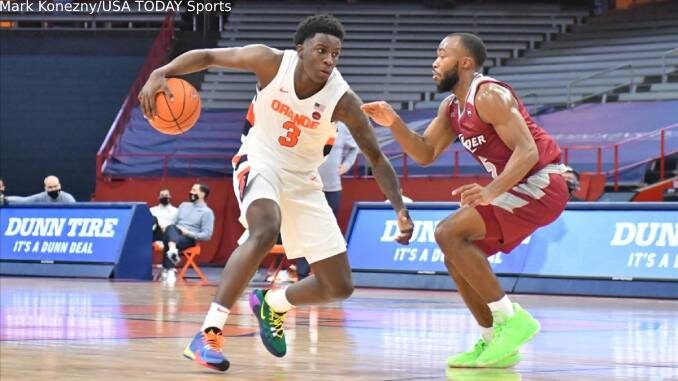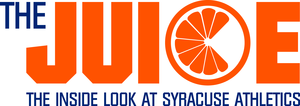
Syracuse lost four players to the transfer portal last year. Now that we have a full season of stats to parse through, how did they do, and how much did SU miss them?
Robert Braswell: Braswell saw a modest increase in time after moving down in competition to the mid-major level, playing 19.9 mpg with Charlotte, up from 12.1 mpg with Syracuse. But his offensive numbers were up across the line, as he shot 50.0 percent from the field, 40.9 percent from downtown, and 94.1 percent at the free throw line.
Syracuse could’ve definitely used his athleticism and understanding of the zone this season, but it’s not clear if he would’ve gotten the same minutes he did with the 49ers. Jim Boeheim played Jimmy Boeheim and Cole Swider for heavy minutes, and SU’s backup forward, Benny Williams, only eked 7.8 mpg over 29 contests.
Woody Newton: Newton’s sophomore campaign resembled his freshman campaign in many respects, though his shooting numbers with Oklahoma State took significant dips. While he appeared in 17 games with the Cowboys as opposed to 11 with Syracuse, he also shot worse from the field (34.3% down from 46.4), 3-point land (28.6 from 38.9) and from the free throw line (42.9 from 62.5).
It’s not clear if Newton would’ve played more with Syracuse this season, but it doesn’t seem like his move to OSU was the best for his collegiate career. Then again, he has two more years of eligibility remaining, more than enough time to blossom into a productive player.
Quincy Guerrier: Guerrier, an All-ACC forward with the Orange in his sophomore season, dipped across the line in his production with Oregon. He was promised a more perimeter oriented role to display his versatility to pro scouts, but it may have just exposed more of his flaws. He played less (26.7 mpg, down from 32.9), shot worse from the field (42.7 from 49.3), scored less (10.3 down from 13.7) and saw a major dip in rebounds (5.4 from 8.4). The only improvement was from the 3-point line, as he shot 33.5% up from 31.1%, but that slight improvement in percentage couldn’t have been worth the swap of playing time.
This is one of the situations where both the player and the team were hurt by a departure. Syracuse struggled with rebounding the entire year, and Guerrier would’ve had an opportunity to average double-digit rebounds with the Orange. He also could’ve continued to form a 1-2, inside-out, offensive punch with Buddy Boeheim. If Guerrier returns, I’m probably not writing about the offseason right now.
» Related: What does Syracuse need to do in the offseason?
Kadary Richmond: After a slow start to the season, Richmond picked it up in the heart of Big East play, scoring in double figures and playing in 30+ minutes in 8 of 10 games after injuries to the Seton Hall’s backcourt. Richmond has been dealing with a thumb injury after injuring it in the Pirates’ regular season finale against Creighton, but will still likely play in Seton Hall’s NCAA Tournament First Round game against TCU.
His numbers were similar to the ones he had at Syracuse. In 31 games, he played slightly more minutes (25.9 up from 21.0), scored more (9.0 up from 6.3) and had one more rebound and one more assist per game than his freshman year at SU.
With Jim Boeheim playing his starting backcourt of Joe Girard and Buddy Boeheim extended minutes once again this season (backup guard Symir Torrence played just 13.1 mpg), it’s hard to imagine that Richmond would’ve played more this year at SU. But there’s no denying that Syracuse missed his athleticism at the top of the zone, and his playmaking ability on offense.
For more Syracuse coverage, like us on Facebook, follow us on Twitter and Instagram, and listen to our podcast.

